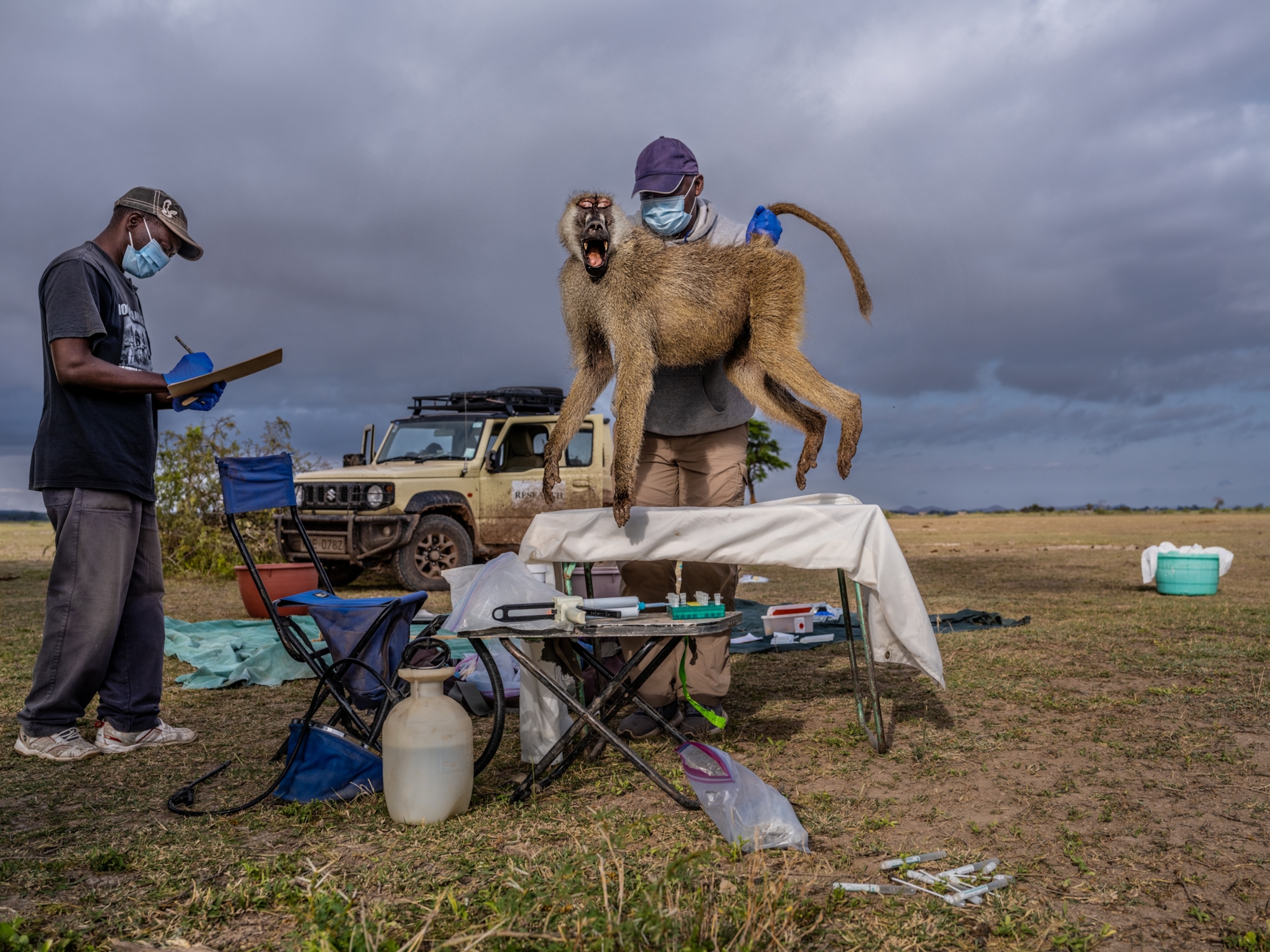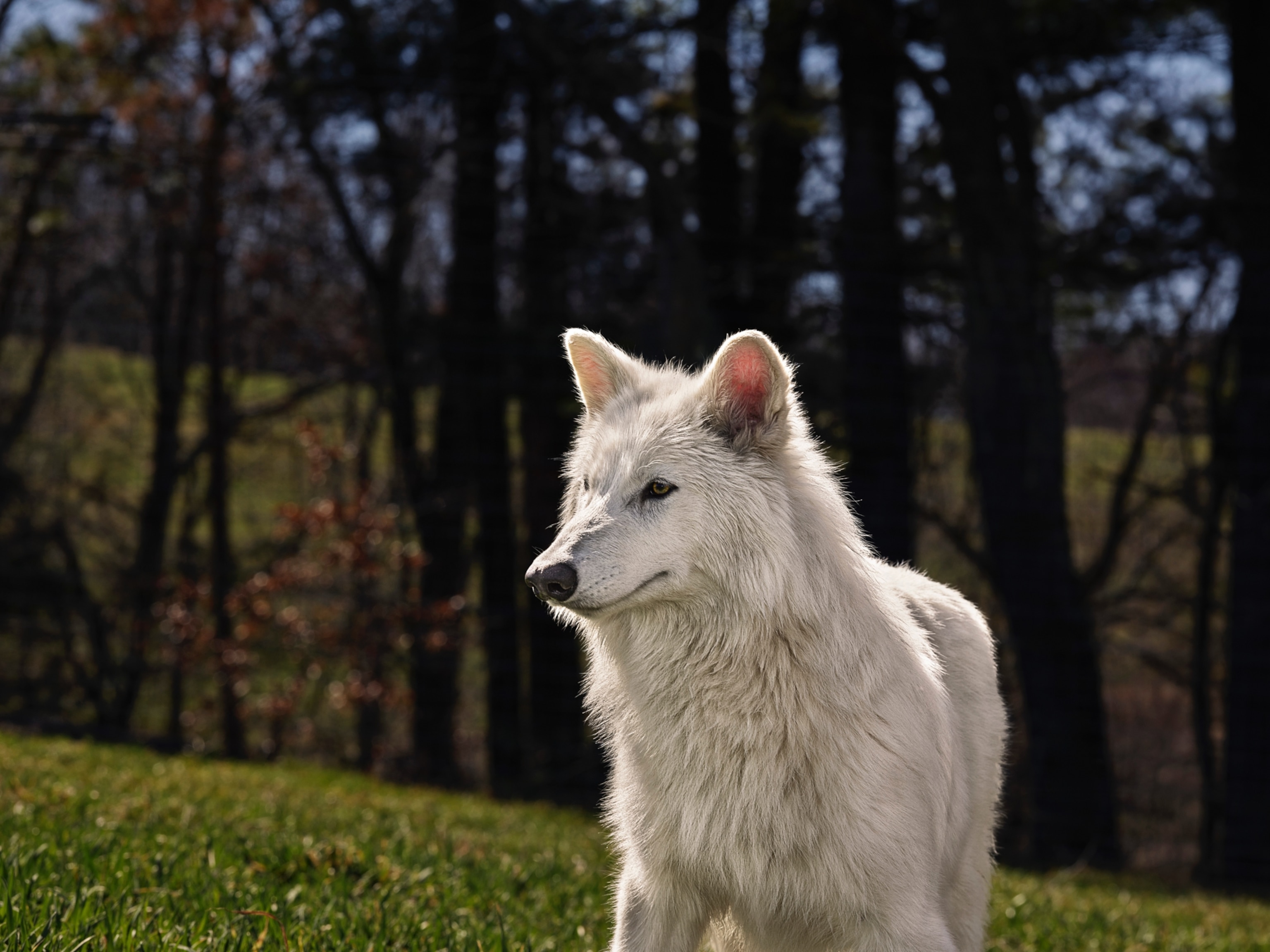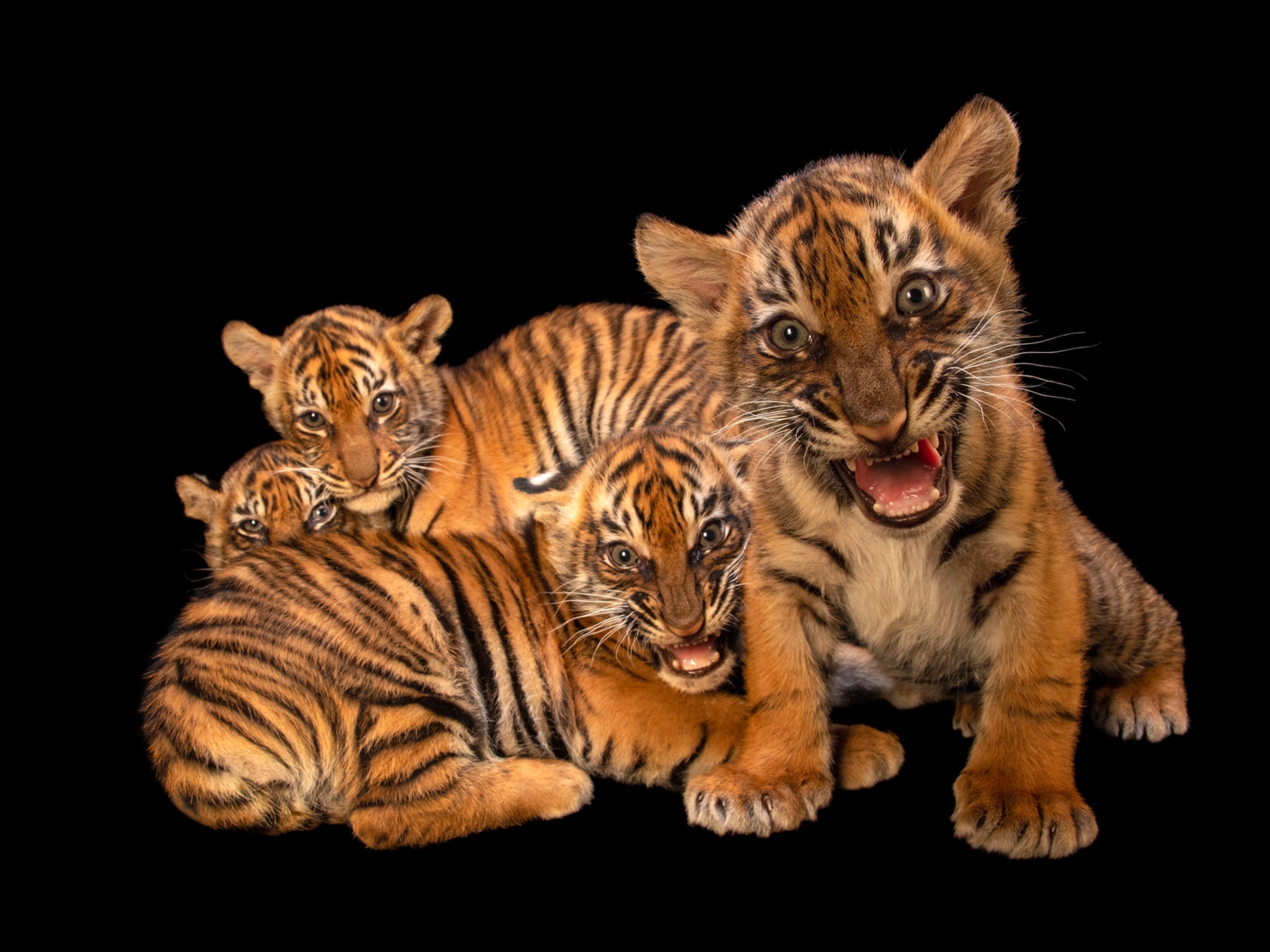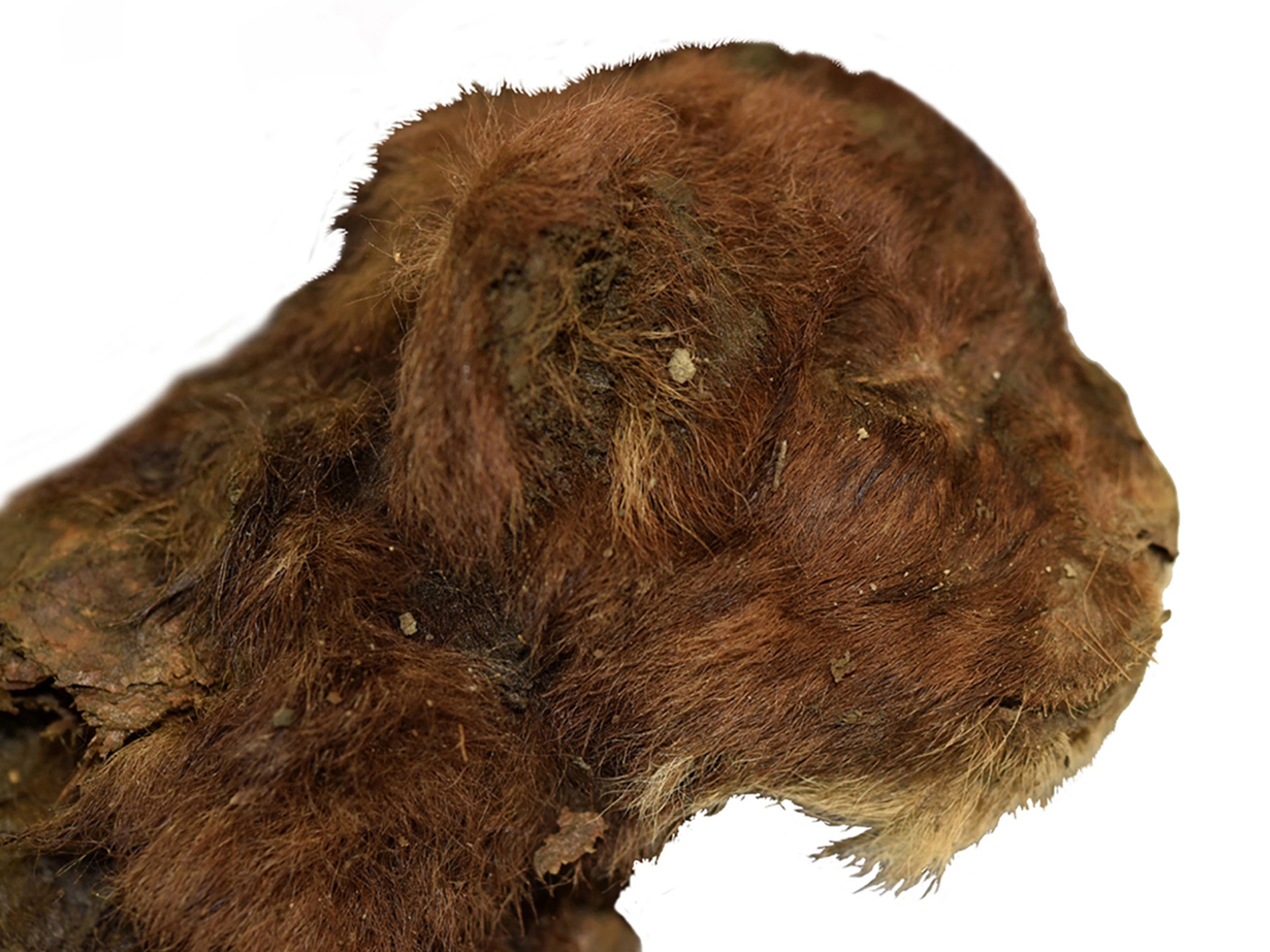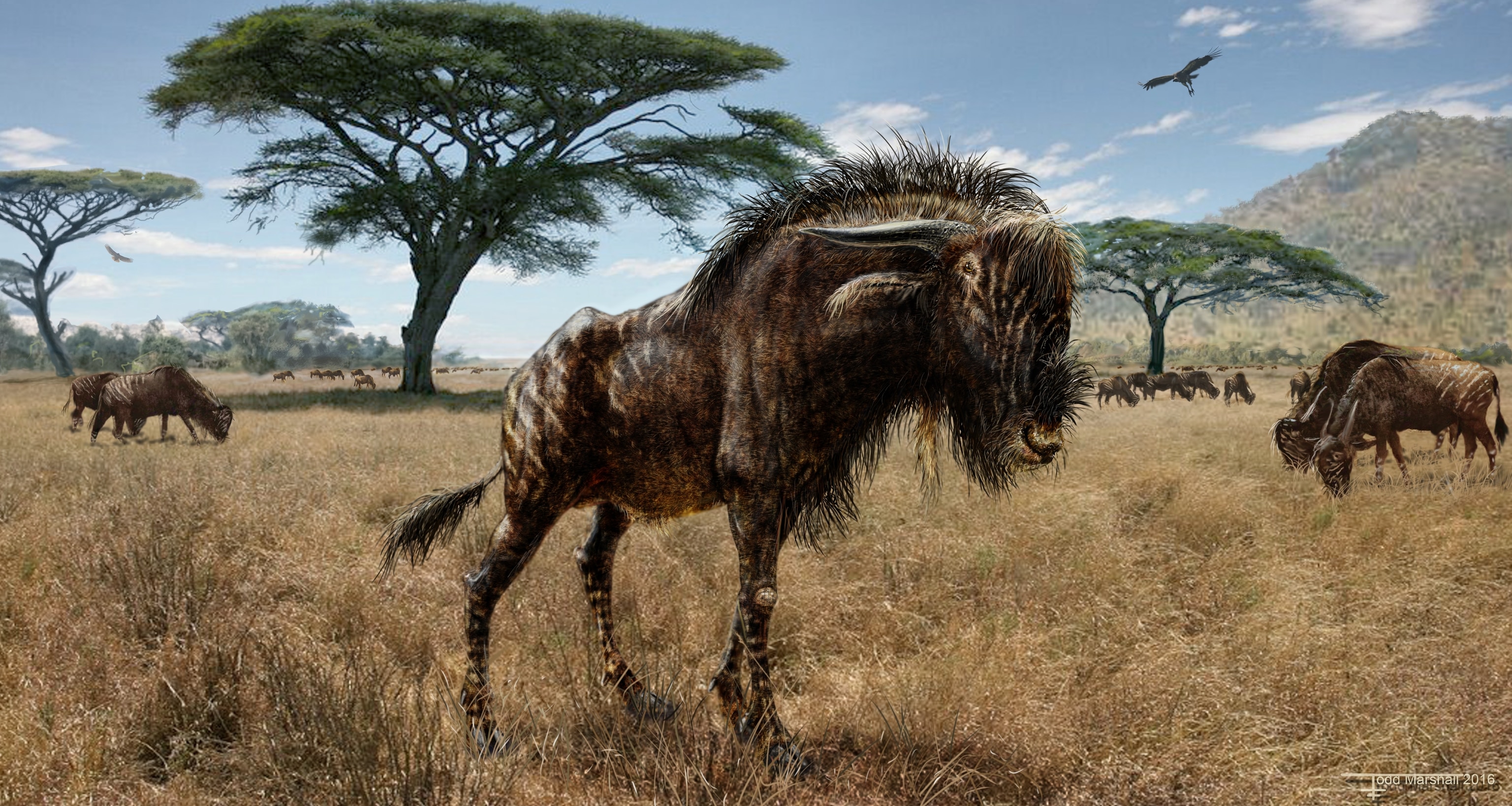
Ice Age Beast Honked Like a Dinosaur
Strange dome gave extinct mammal a trumpeting sound.
A strange fossil wildebeest had hollowed-out headgear that let it trumpet like a dinosaur.
The Ice Age beast, named Rusingoryx atopocranion, lived on Kenya’s Rusinga Island between 75,000 and 50,000 years ago, back when the area was carpeted in dry grasslands. The species was previously only known from partial skulls, but now a bonebed has revealed that they were more bizarre than anyone expected.
New Rusinga excavations turned up six Rusingoryx skulls, ranging from juvenile to adult, that were more complete than any found before. “The first time I saw them my jaw completely dropped,” says paleontologist Haley O’Brien of Ohio University, lead author of the study. The research was supported by the National Geographic Society's Committee for Research and Exploration.
Incomplete fossils had led paleontologists to suspect Rusingoryx had some kind of tapir-like proboscis, but the new skulls showed that the mammal instead had a high nasal dome in front of its eyes. And it was hollow, encasing a circuitous nasal passage.
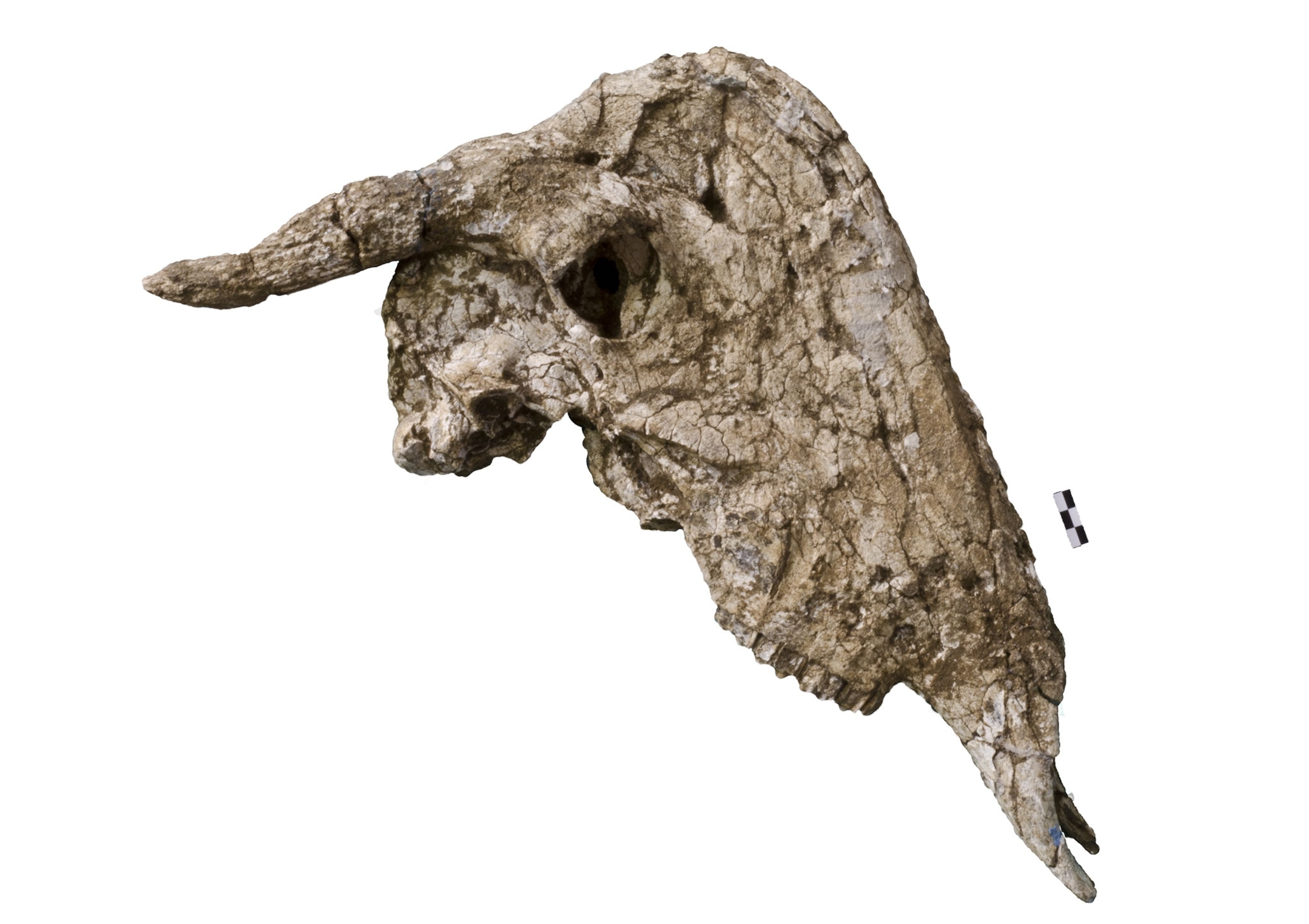
“There aren’t any living animals with a nasal apparatus like this,” O’Brien says, but there are some fossil ones. Outside and in, the nose of Rusingoryx resembles the hollow crests of the “duckbilled” dinosaurs Corythosaurus and Lambeosaurus, which lived about 75 million years earlier. “Both groups essentially push the nasal part of their airway into the crest, and they’re using similar suites of bones to form the crest itself.”
Other paleontologists are just as surprised. Royal Ontario Museum paleontologist David Evans, an expert on hadrosaurs, says he was “blown away” by the Rusingoryx skulls and that “the resemblance between Rusingoryx and some hollow-crested dinosaurs in the form of the nasal structures is truly striking.”
The big question that always faces paleontologists when they uncover a bizarre structure is whether or not that odd appendage had a function, and what that function was. In the case of Rusingoryx, O’Brien says, “we used a process of elimination.”
One of the early ideas, O’Brien says, is that the expanded nose of Rusingoryx was better at cooling or warming incoming air. All mammals have some ability to do this, even humans, thanks to scroll-like bones called turbinates that increase the surface area inside the nose. Given that Rusingoryx lived in “a hotter, drier savanna than what we have today,” O’Brien says, it seemed possible that the mammal’s nose was an enhanced air conditioner, but the dome’s internal anatomy didn’t hold up this conclusion.
Combat was another possibility, especially since hoofed herbivores, from bison to bighorn sheep, have regular head-to-head clashes. But these mammals have extra thick skulls and horns, O’Brien says, and Rusingoryx didn’t. “The skull bones of Rusingoryx are incredibly thin,” O’Brien says, “so using that dome for head-butting would have been a really, really dangerous idea.”
“That left us with sound, which sounded kind of crazy until we looked at vocal behavior of other artiodactyls,” O’Brien says. Many social, hoofed herbivores are chatty and have ways to modulate their vocal tracts to make a range of wails and grunts. This seemed to be the best fit for Rusingoryx, and the anatomy and acoustic models fit the hypothesis. “Between the anatomy, the pencil-and-paper physics, and the vocal behavior of living artiodactyls, sound production made a lot of sense,” he says.
So what did Rusingoryx sound like? From the nasal loop, O’Brien says, “We calculated a frequency of between 250 and 750 hertz, which is not only pretty low, it also overlaps with the sonic frequencies of a vuvuzela.” That means a herd of Rusingoryx might have sounded like a stadium full of fans at the South Africa World Cup. With added soft tissues, Rusingoryx may have been capable of even deeper vocalizations that would have been inaudible to us. “Rusingoryx could very likely make a low trumpeting sound but there’s a good chance it could also vocalize in stealth mode.”
While Evans points out that such a dome was likely important for visual display and recognition, too, he agrees that “the case of vocalization as the primary function of the nasal dome in Rusingoryx is by far the most convincing.” And this shows that the evolution of bizarre skulls aren’t just driven by combat or showing off.
While we’ll never know exactly what Rusingoryx sounded like without the soft tissues of the throat, O’Brien says, it’s clear that these were vocal beasts that thrived and perished very close to us in time. Imagining what a herd of these nosy mammals would have sounded like, O’Brien calls it a “Pleistocene cacophony.”
Read Brian Switek's blog Laelaps on NationalGeographic.com. Follow him on Twitter, Facebook, and Instagram.
Correction: Haley O'Brien's name was spelled incorrectly as "O'Brian" in an earlier version of this story.

